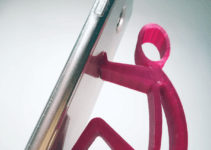No one is surprised to see teenagers spend their entire day with a phone or tablet in their hand as if it were an extension of their bodies. Some teens don’t even turn off their digital devices in the movie theater or hospital, where they are expressly prohibited. There are also cases of kids who spend long hours on their digital devices, unable to stop checking and updating social networks.
Risks of Technology
 It is true that technological progress simplifies the lives of users in many ways, but the person-machine relationship can become pathological. There are many risks attached to these devices such as techno-stress, technophilia, techno-fatigue, and techno-addiction, etc.
It is true that technological progress simplifies the lives of users in many ways, but the person-machine relationship can become pathological. There are many risks attached to these devices such as techno-stress, technophilia, techno-fatigue, and techno-addiction, etc.
Technostress
Technostress can manifest itself in various ways. For example, the tension arising from the extreme use of technologies and the urgent need to respond to a message immediately. It is also a state of nervousness that precisely triggers a lack of connection.
Technophilia
Then there is the technophilia, which can be described as an uncontrollable desire to acquire the latest gadget released.
Techno-fatigue
There is also techno-fatigue, characterized by a state of mental and physical fatigue, cognitive exhaustion, visual disturbances, headache and muscle aches (especially neck and back strain), resulting from overuse of technology. And despite this exhaustion, the person fails to disconnect.
Techno-addiction
Another picture is given by the techno-addiction, which has to do with the excessive need for technology at any time and place, to the extent that the person’s real life is impaired by a preponderance of virtual relationships.
According to experts,
The techno-addiction, as with any other addiction, is a physical and psycho-emotional disease that has to do with the dependence on one thing, in this case the technology. It is represented by desires that consume the thoughts and behaviors and they act on those activities designed to get the feeling or the desired effect or to engage in the desired activity, which is in the same plane as other addictions such as alcoholism or drug addiction.
Although there are no scientific studies that account for the prevalence of these risks in society, recent research from Intel in several countries found that 40% of users remain connected to their devices 24 hours a day and 8 out of 10 people sleep with their cell phone.
Key Indicators
According to experts, the first signs that something is wrong are the loss of self-confidence, work performance problems, and conflicts in interpersonal relationships. In turn, this speeds up the sympathetic system, and causes anxiety, irritability, memory problems, concentration, depression, frustration and anger, a sense of vulnerability, and even restless leg syndrome. Additional symptoms include degraded health, gastritis, ulcers, skin problems, insomnia, and hypertension.
Here are some indicators to determine if your teen is at risk:
- One of the strongest symptoms is anxiety. Anxiety within mental health is a very general phenomenon and not specific, comparable with fever.
- Your teen worries about their connection and prioritizes their device over the conversation with the people in front of them.
- Another sign is when the same person begins to worry about not being able to disconnect and feels a void when the phone is forgotten.
Prevention
The best prevention is awareness. Let your teen know about these risks and make them realize the need for prevention. Once they agree, take digital help and install the best parental control app on their devices. One app popular among parents is FamilyTime. With the app you can:
Monitor Internet Use
- Check browsing history
- View bookmarks
- Keep an eye on their most visited sites
- Put questionable sites into a Watchlist
- Receive alerts whenever they try to access restricted sites
- Check Mobile Activities
With FamilyTime, parents can:
- Check the call logs
- View contacts with details
- Check installed apps
Track Location
Parents can also,
- Check the current location of their teens on the virtual map
- Trace where they have been all day long
- Receive panic alerts along with location
- View their check-ins and check-outs
This is not all, there are many other features that empower parents to take control such as remotely locking the phone, blacklisting apps, and watchlisting contacts. It’s everything a parent could ask for! Give this app a try for free. Download it from your phone’s app store or click the buttons below:
Monitoring can save your teen!
We all know what makes monitoring imperative so if you manage to monitor your teen without compromising over their freedom, that is the best solution. So get hold of your parental control app and ensure their safety now!






